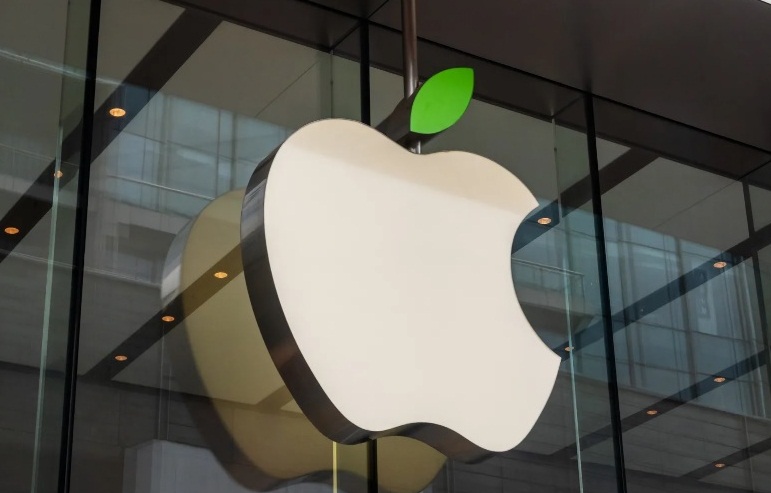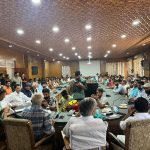Apple Inc. assembled more than $7 billion of iPhones in India during last fiscal year, tripling production in the world’s fastest growing Smartphone arena after accelerating a move beyond China. The US company now makes almost 7% of its iPhones in India through expanding partners from Foxconn Technology Group to Pegatron Corp as it is a significant leap for India, which accounted for an estimated 1% of the world’s iPhones in 2021.
According to media reports, its long time partners, who make most of the world’s iPhones from sprawling factories in China, have added assembly lines at a rapid pace over the past year, declining to be named as the information isn’t public.
The world’s most valuable company struggled last year with chaos at Foxconn’s main “iPhone City” complex in Zhengzhou, which drove home vulnerabilities in Apple’s supply chain and forced it to cut output estimates.
Of the total production, Apple exported $5 billion of iPhones in the year ended March 2023, nearly four times as much as the previous period. Apple will likely try to manufacture the next iPhones in India at the same time as in China, sometime in the fall of 2023. If so, that will be the first time that iPhone assembly begins concurrently in the two countries. And if the aggressive expansion of its suppliers continues, Apple could assemble a quarter of all its iPhones in India by 2025.
Even before last year’s iPhone city flare up, Apple had recognized the need to diversify its supply chain. It successfully lobbied for incentives in India and pushed suppliers Foxconn, Wistron Corp. and Pegatron to ramp up locally. The trio, which together employ some 60,000 workers in India, make models ranging from the aging iPhone 11 to the latest iPhone 14 in the country.
That’s helped place Apple at the heart of India’s ambitions to become a major manufacturing hub and alternative location to China. Apple is among the world’s most exacting when it comes to manufacturing: its production chain encompasses hundreds of companies across the world and employs millions, much of that now in China.
The migration of iPhone production represents an economic triumph for India that could have implications for how other US brands plan their futures. For Apple, the country itself represents a fount of future growth, at a time the Chinese economy is sputtering after years of punishing Covid Zero restrictions.
Apple will open its first two retail stores in India next week, one in the financial hub of Mumbai and another in the capital New Delhi. Chief Executive Tim Cook is scheduled to fly in to personally inaugurate the two stores, underscoring the domestic market’s rising importance.
Cupertino, California-headquartered Apple has also sought changes in India’s labor laws as part of its effort to expand local production and create mega factories. Its largest contract manufacturer, Foxconn, plans to invest about $700 million on a plant in a southern state to make phone components and possibly iPhones.
Apple Inc. had its genesis in the lifelong dream of Stephen G. Wozniak to build his own computer—a dream that was made suddenly feasible with the arrival in 1975 of the first commercially successful microcomputer, the Altair 8800, which came as a kit and used the recently invented microprocessor chip. Encouraged by his friends at the Homebrew Computer Club, a San Francisco Bay area group centred around the Altair, Wozniak quickly came up with a plan for his own microcomputer.
In 1976, when the Hewlett-Packard Company, where Wozniak was an engineering intern, expressed no interest in his design, Wozniak, then 26 years old, together with a former high-school classmate, 21-year-old Steve Jobs, moved production operations to the Jobs family garage. Jobs and Wozniak named their company Apple. For working capital, Jobs sold his Volkswagen minibus and Wozniak his programmable calculator. Their first model was simply a working circuit board, but at Jobs’s insistence the 1977 version was a stand-alone machine in a custom-molded plastic case, in contrast to the forbidding steel boxes of other early machines. This Apple II also offered a colour display and other features that made Wozniak’s creation the first microcomputer that appealed to the average person.
Though he was a brash business novice whose appearance still bore traces of his hippie past, Jobs understood that in order for the company to grow, it would require professional management and substantial funding. He convinced Regis McKenna, a well-known public relations specialist for the semiconductor industry, to represent the company; he also secured an investment from Michael Markkula, a wealthy veteran of the Intel Corporation who became Apple’s largest shareholder and an influential member of Apple’s board of directors.
The company became an instant success, particularly after Wozniak invented a disk controller that allowed the addition of a low-cost floppy disk drive that made information storage and retrieval fast and reliable. With room to store and manipulate data, the Apple II became the computer of choice for legions of amateur programmers. Most notably, in 1979 two Bostonians—Dan Bricklin and Bob Frankston—introduced the first personal computer spreadsheet, VisiCalc, creating what would later be known as a “killer app” (application): a software program so useful that it propels hardware sales.
While VisiCalc opened up the small-business and consumer market for the Apple II, another important early market was primary educational institutions. By a combination of aggressive discounts and donations (and an absence of any early competition), Apple established a commanding presence among educational institutions, contributing to its platform’s dominance of primary-school software well into the 1990s.
(The author is a regular columnist and can be mailed at [email protected])








